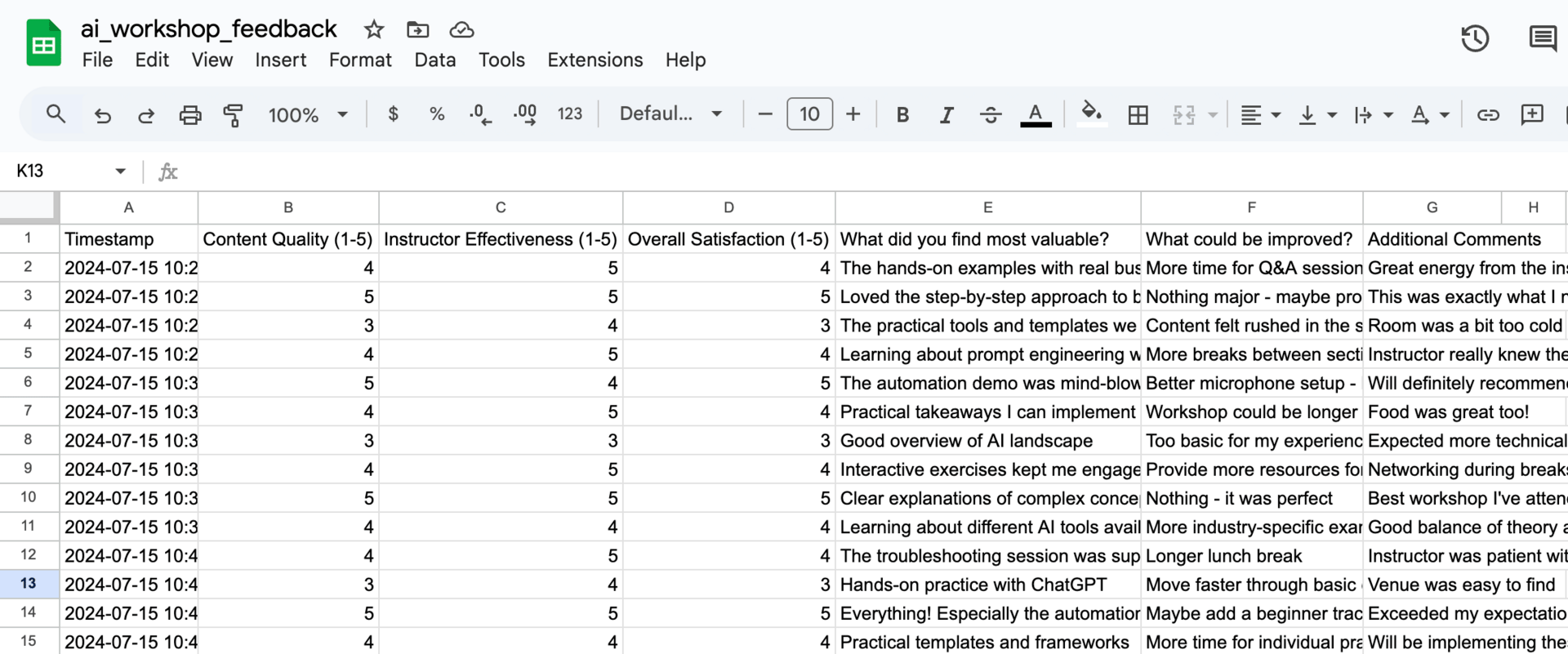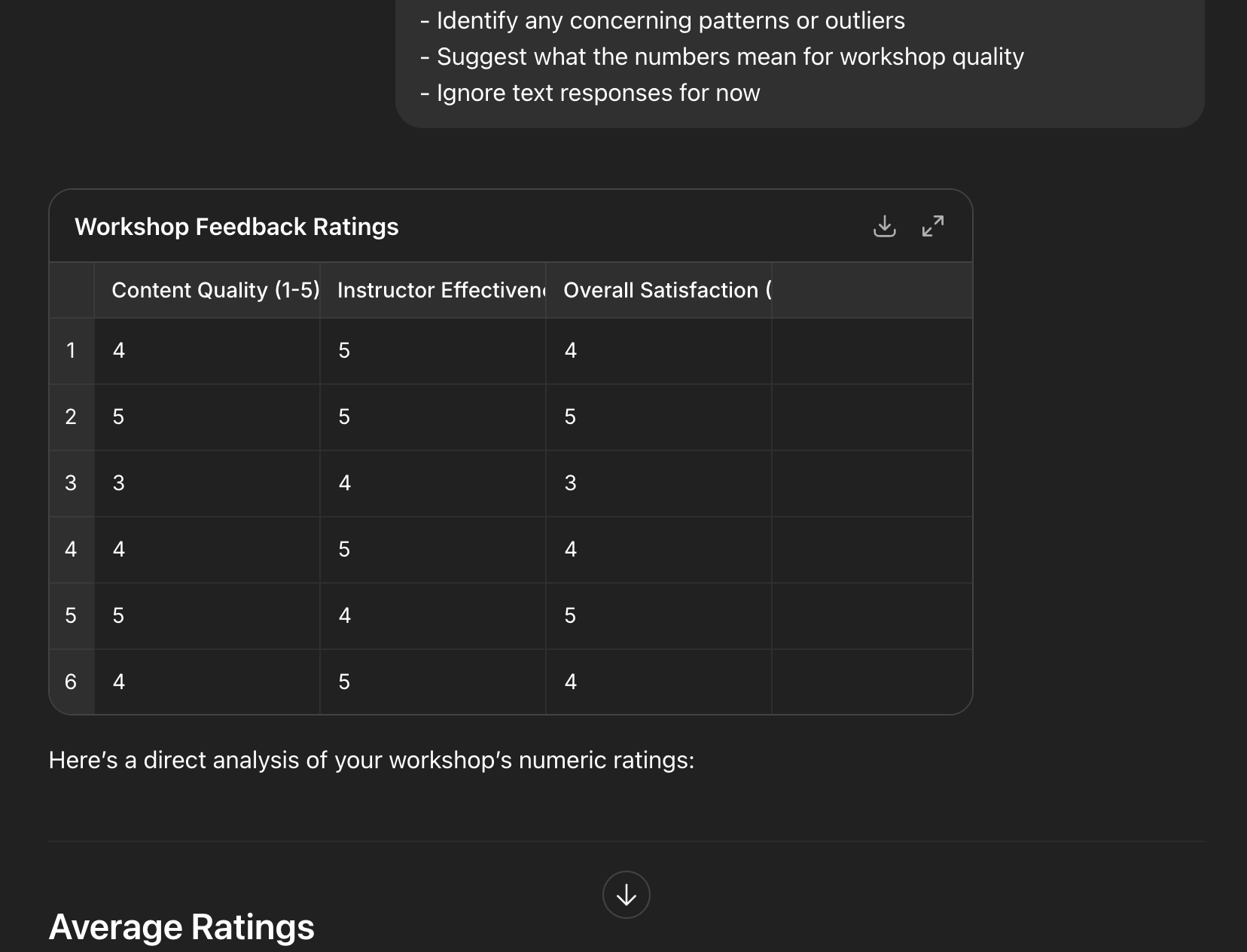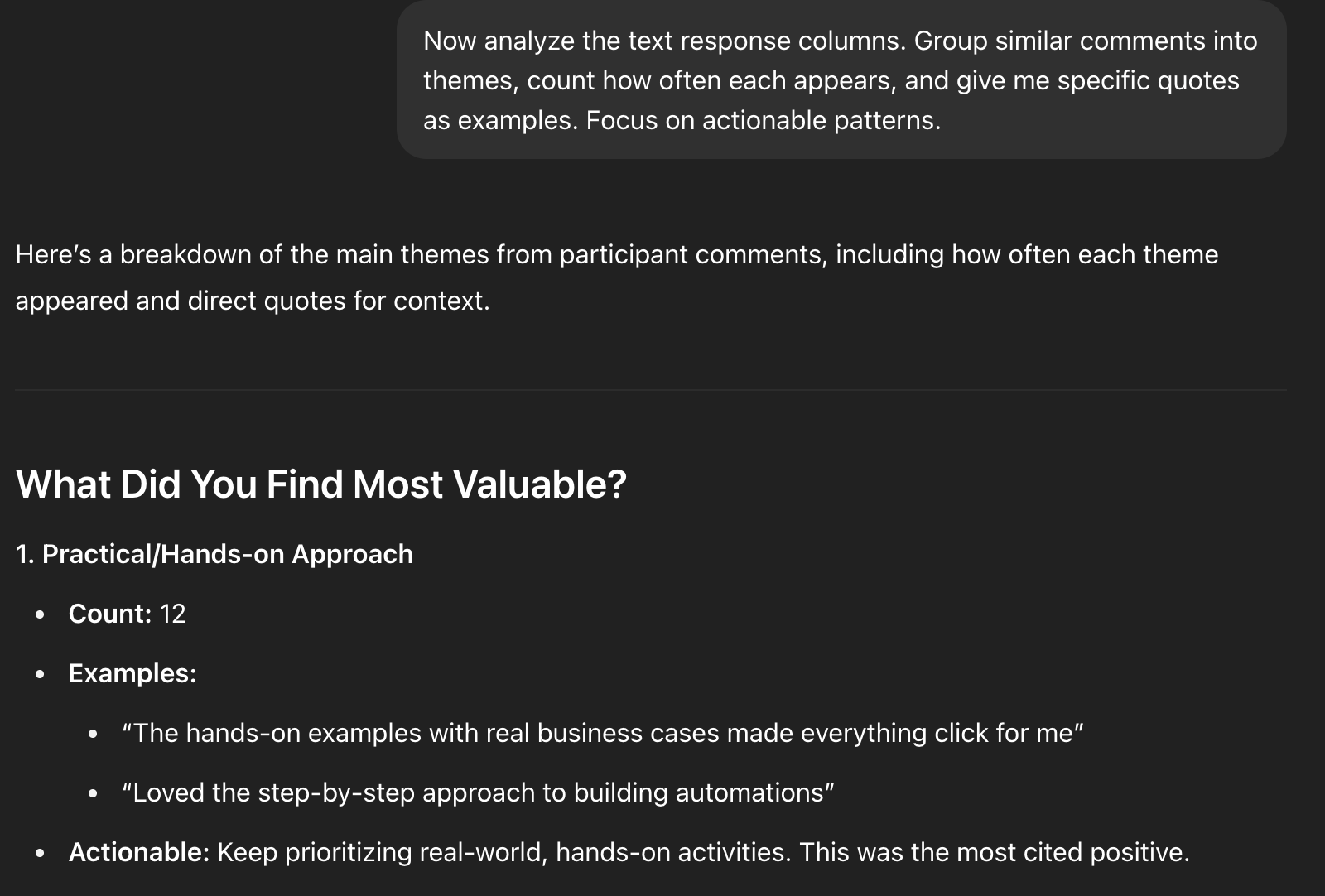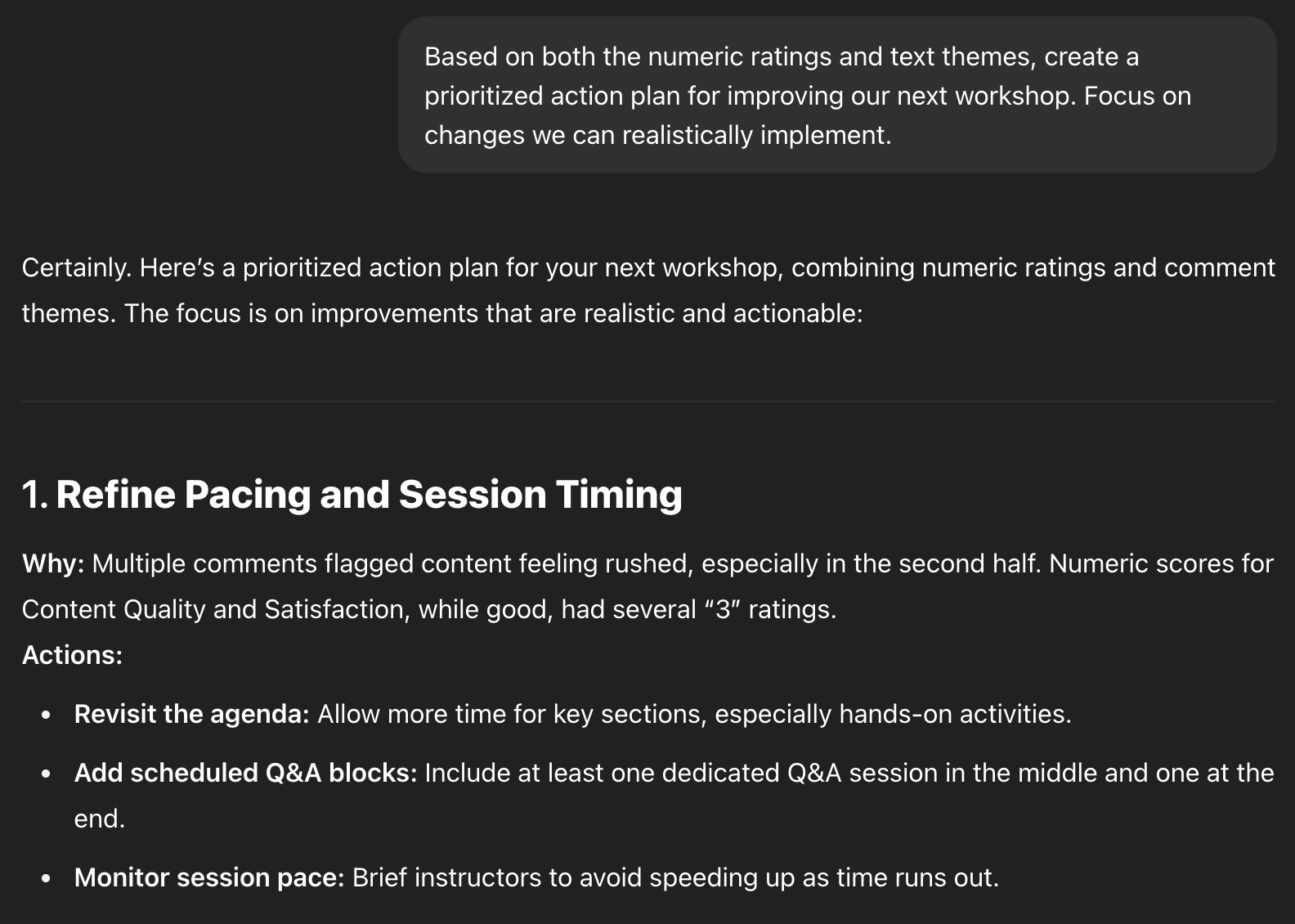- AI Academy
- Posts
- 📚 Turn Feedback Forms Into Action Plans With AI
📚 Turn Feedback Forms Into Action Plans With AI
How we use ChatGPT to analyze survey feedback
Reading Time: 4 minutes
Hello AI Enthusiast,
Drowning in feedback form responses shouldn't be part of your job description. Today, we're showing you how to use ChatGPT to transform any collection of survey responses into clear insights that drive improvements. Whether you're analyzing customer satisfaction surveys, employee feedback, or event evaluations, you'll learn our process for extracting patterns from both numeric ratings and open-ended comments.
The Problem
You send out a feedback form, get decent response rates, and then... stare at a spreadsheet full of mixed ratings and paragraph-long comments. Reading through 50+ responses manually takes forever, and you end up with vague takeaways like "mostly positive" or "some people want more examples." Meanwhile, buried in those responses are specific patterns that could actually improve your next workshop, product launch, or team meeting. The good stuff gets lost in the noise.
How We Do It Step-by-Step
Let's walk through our process using feedback from a recent AI workshop. We collected 20+ responses with ratings for content quality, instructor effectiveness, and overall satisfaction, plus open-ended questions about improvements and highlights. We'll use fake responses here to show you the method.
Step 1: Export and Organize Your Data
First, export your feedback responses from Google Forms (or whatever platform you use) as a CSV file. Open it in Google Sheets or Excel and clean up the data - remove any test responses, and make sure your columns have clear headers like "Content Quality", "Overall Satisfaction", and "Suggested Improvements."
This step feels tedious, but it saves you from staring at ChatGPT responses that make no sense because your data was messy to begin with.

Clean spreadsheet with feedback data organized in columns
Step 2: Analyze Numeric Ratings for Patterns
We analyze numbers and text separately because they tell different stories. Numbers show you the "what" - like content scoring lower than instruction. Text responses tell you the "why" - maybe the examples were outdated or the pace was too fast. Doing them separately keeps ChatGPT focused instead of trying to juggle everything at once.
Upload your entire CSV file to ChatGPT (just drag and drop it into the chat). Then use this prompt to focus the analysis on your numeric data:
You're analyzing feedback from a professional workshop. This data will inform improvements for future sessions.
Focus only on the numeric rating columns and provide actionable insights about workshop performance.
- Calculate averages and distributions for each rating category
- Identify any concerning patterns or outliers
- Suggest what the numbers mean for workshop quality
- Ignore text responses for now
ChatGPT analyzing the uploaded file (partial conversation)
Step 3: Extract Themes from Open-Ended Responses
Since ChatGPT already has your file, just ask:
Now analyze the text response columns. Group similar comments into themes, count how often each appears, and give me specific quotes as examples. Focus on actionable patterns.
ChatGPT organizing feedback into themes (partial conversation)
Step 4: Create an Action Plan
Here's where most people drop the ball - they get great insights and then... nothing happens. Let's fix that by asking ChatGPT to turn your analysis into actual next steps:
Based on both the numeric ratings and text themes, create a prioritized action plan for improving our next workshop. Focus on changes we can realistically implement.ChatGPT will synthesize everything and give you practical tips to implement next time.

ChatGPT's action plan with specific improvements (partial conversation)
This beats the usual post-workshop ritual of reading feedback, nodding thoughtfully, and then doing exactly the same thing next time because you forgot what people actually said.
That's it - no complex analytics software, no data science degree required. Just ChatGPT doing the heavy lifting while you focus on actually improving things instead of drowning in spreadsheets.
Speaking of workshop feedback - we actually run AI training sessions for companies looking to get their teams up to speed on practical AI applications like this one. Hands-on workshops where people learn to use tools like ChatGPT to solve real workplace challenges. If your team keeps talking about AI but hasn't figured out how to actually use it for daily tasks, let's chat.
Your Turn
Time to stop letting feedback forms gather digital dust. Pick your most recent batch of survey responses - customer feedback, employee surveys, event evaluations, whatever you've got sitting in your Google Drive.
Here's your starter challenge:
Grab any feedback dataset you've been meaning to analyze (even if it's just 10-15 responses)
Upload the whole CSV to ChatGPT and start with the numeric analysis
Follow up with the text analysis to see what patterns emerge
Ask for that action plan - this is where most people chicken out, but it's the only part that actually matters
Don't overthink it. The goal isn't to become a data scientist overnight - it's to stop making decisions based on gut feelings when you have actual feedback sitting right there.
Want to get even more practical? Explore hands-on AI learning with AI Academy:
AI Academy Membership: Get 12 months of access to all our cohort-based programs, live webinars, on-demand courses, and tutorials.
AI Agent Bootcamp: Accelerate processes and solve business problems by mastering prompts and building AI Agents, without coding.
Corporate Training: Equip your team with the skills they need to unlock the potential of AI in your business.
Practical Introduction to ChatGPT: A free course on using ChatGPT confidently, understanding its workings, and exploring its potential.
We'll be back with more AI tips soon!